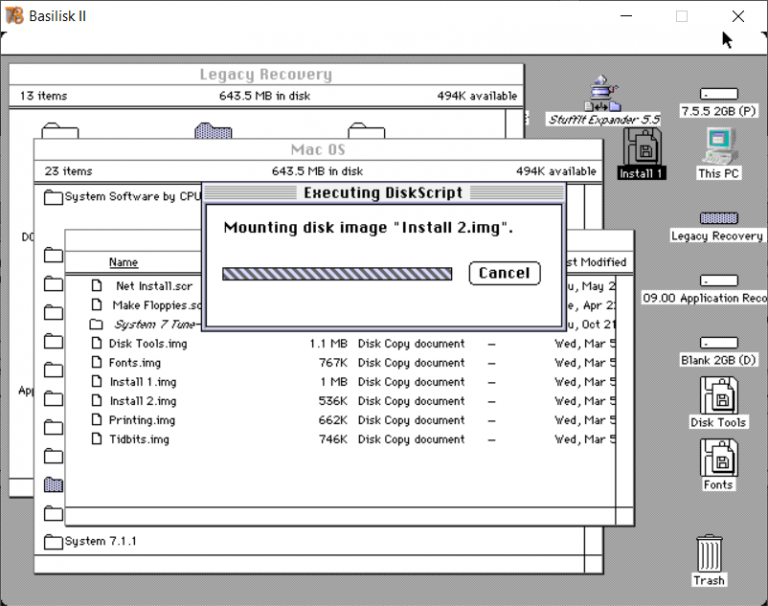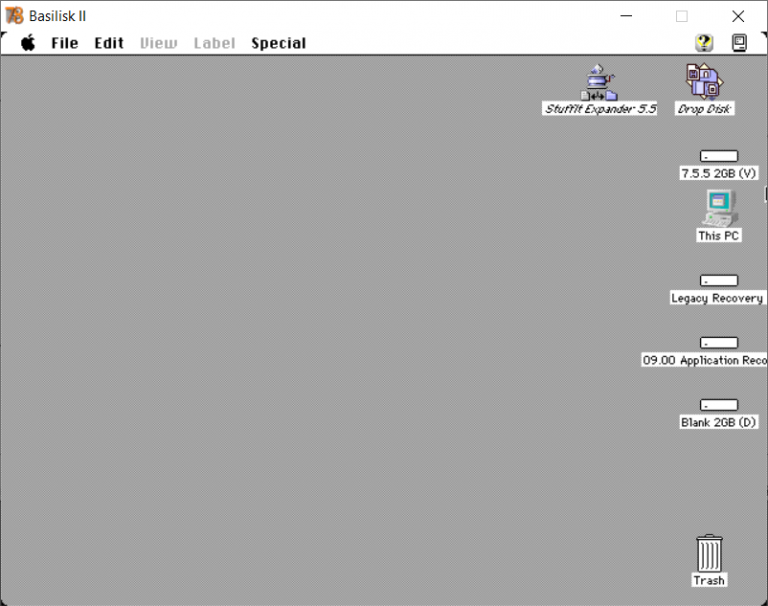

If the ASIC chip really is 100% compatible then Apple will jump on it. Gate arrays are now fast enough (and big enough for an 8000 gate design like the 65816) they are also cheaper to make and are very easy to second source. They might have fixed ABORT, but I don't know for sure.
SHRINKIT MACINTOSH 68K SOFTWARE
Their utmost goal is "105% compatibility" meaning that all software will work (even the Disk ][) and that the REP/SEP quirks will be gone. What I am ragging on is the fact that they are trying to milk more speed out of the same mask when it would be a lot easier to redesign the mask itself so it is native to a newer technology that does run at higher speeds.ĪSIC reverse-engineered the chip from WDC's timing diagrams.

SHRINKIT MACINTOSH 68K GENERATOR
(For a 4 mhz WDC chip you need 8 mhz'able parts, and WDC's timing margins are forcing me to (a) make my timing generator a lot more complex or (b) add a wait state. The project I am building now will require wait states on the DRAM, not because the DRAM is too slow, but because the WDC chip's timing margins are very bad. I am actually building stuff that uses his chips so I have to know about this. All I'm saying is that his timing margins are lousy because of it. Starting with the articulation of these three points, the general aim of the work is to consider the Apple Event as a case study through which to understand a process of mass re-education towards the religious phenomenon, reproduced by the marketing strategies of late capitalism.I'm not arguing with that, in fact it's one reason I admire his architectural enhancements in the 65816. In the third, the ritual phases of this techno-animistic narrative will be illustrated, and the way in which they combine to create the imaginary community of the Apple Park examined. In the second, the Apple Event will be analysed as a reactivation of the religious archetype of the narrative for the mass use and consumption by millions of users. The first highlights how narrative has the power to extend the fictional world to the sphere of social action, determining real effects in the global market.

Moving within this analytic framework, the article is divided into three parts. It is a performance whose particularity is the way it hinges on the narration of devices. The third part addresses the ‘So what?’ question by reflecting on the validity, reliability and generalizability of this study from the perspective of linguistic ethnography.Ībstract: Using a narrative approach, the paper focuses on the Apple Special Event, seen as a veritable video-theatrical performance enjoyed annually by a vast audience spread all over the world, as well as by an equally large number of communities of experts (journalists, bloggers, IT professionals). In the second part, the book presents four empirical chapters that analyze journalism as a field of production, then as materiality, next as literacy and finally as opacity. How do reporters make sense of the various sources, narratives and frames around them and channel these into one final news story? What is the journalist’s role in the representation of events? How are news articles negotiated between reporters, editors and sources? How do technologies of production mediate the news process? Crucially, what does the journalist actually do while writing? The first part of this book outlines a theoretical and methodological framework for a linguistic ethnographic approach to news production and describes the fieldwork procedures for collecting data. Drawing on data collected at the economics newsdesk of De Standaard, a quality newspaper in Belgium, this book examines the situated practices of print journalists in their roles as knowledge mediators and creators.


 0 kommentar(er)
0 kommentar(er)
